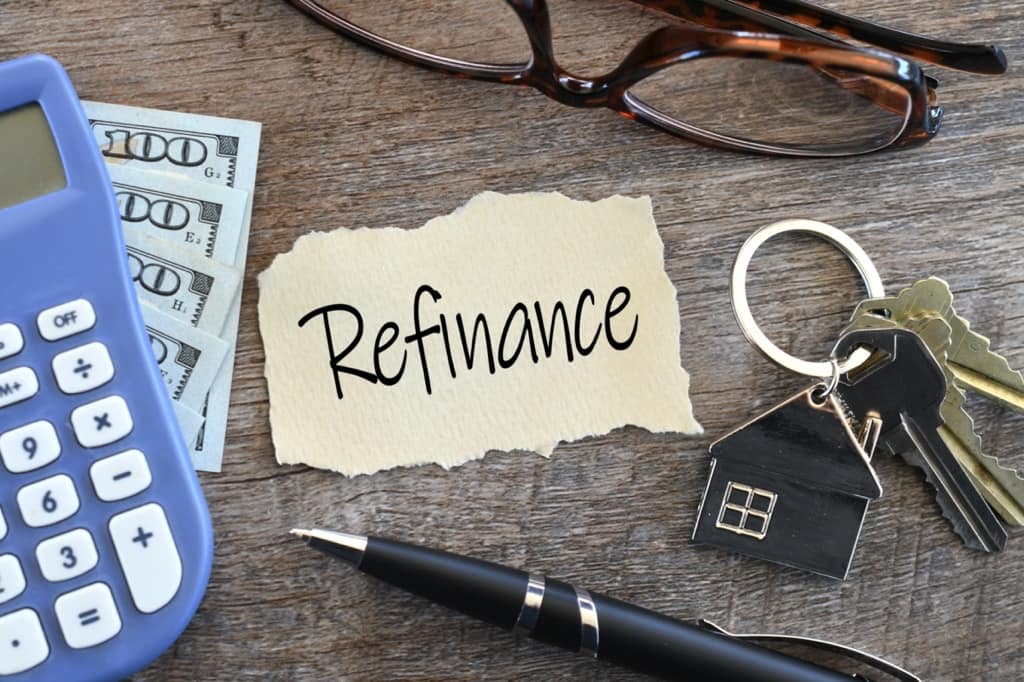The Covid-19 pandemic saw a surge in Australian homeownership, thanks to record-low interest rates. But as these rates begin to rise, many new homeowners are finding themselves trapped in a “mortgage prison,” unable to refinance due to stringent financial stress tests. However, there’s hope. Westpac is easing its protocols, potentially offering a lifeline to those struggling. Want to learn more? Read on or check out the video below.
Table of Contents
What is a Financial Stress Test, and how does it affect me?
The standard financial stress test plays a crucial role in the world of mortgages. It’s a risk assessment tool designed to gauge whether a borrower is financially equipped to repay a home loan under potential adverse conditions. Think of it like a hypothetical scenario that banks use to ensure that borrowers can still make their loan repayments if the economic climate becomes less favourable.
This test specifically looks at how a borrower would cope if interest rates were to rise by 3 per cent, a situation that would inevitably increase monthly mortgage repayments. The 3 per cent margin isn’t an arbitrary number, it’s designed to represent a substantial rate hike that could occur over the term of a mortgage due to market fluctuations.
Why do banks use a Financial Stress Test?
Banks impose this test for two primary reasons. Firstly, to protect themselves from the financial risks associated with a borrower defaulting on a loan. A default occurs when a borrower can’t meet their loan obligations, resulting in potential losses for the bank.
Secondly, this test is also designed to protect borrowers. While it may seem stringent, the stress test helps ensure that borrowers do not overextend themselves financially. The ultimate goal is to avoid a situation where a borrower finds themselves unable to meet their loan repayment commitments, which could lead to serious financial consequences like foreclosure.

Why is the standard Financial Stress Test a problem?
As interest rates increase from their record lows, many homeowners find that they do not pass the standard financial stress test when they attempt to refinance their loans.
Refinancing a loan typically involves taking out a new loan with more favourable terms (like a lower interest rate) to pay off the existing loan. It’s a common strategy used by homeowners to save money on their mortgage over the long term.
Unfortunately, if a homeowner fails the financial stress test, their refinancing application will likely be declined by the bank. This situation leaves these homeowners in a tricky predicament, forcing them to continue with their existing high-interest mortgage. It’s like being trapped in a financial prison, hence the term ‘mortgage prison’.
Therefore, understanding the role and implications of the standard financial stress test is crucial for anyone involved in the mortgage industry, particularly homeowners. It’s not just a box-ticking exercise by the banks, but a key factor that can influence your ability to manage your home loan effectively over the long term.
What is Westpac's new policy, and how can it assist homeowners?
Westpac, one of Australia’s largest banks, has acknowledged the looming mortgage crisis and has crafted a new policy intended to alleviate its financial stress test protocols. This policy change is an essential step towards helping Australians who find themselves locked in what is often referred to as ‘mortgage prison’ – a situation where they are trapped in high-interest loans they can’t refinance.
The cornerstone of this new policy is the ‘Modified Serviceability Assessment Rate’. To understand what this means, let’s break it down.
What is Serviceability?
‘Serviceability’ in the context of a mortgage refers to a borrower’s ability to meet their loan repayments. So, a ‘serviceability test’ is what banks use to determine whether or not a borrower can afford to service (pay) a loan, taking into account their income, expenses, and the interest rate of the loan.
How is the Modified Serviceability Assessment Rate different?
The ‘Modified Serviceability Assessment Rate’ is an alternative to the standard serviceability test, with different criteria designed to provide more flexibility to borrowers.
This alternative test could be a lifesaver for homeowners who fail the standard serviceability test – which, as we learned earlier, calculates whether borrowers can afford repayments if interest rates were to rise by 3 per cent. The Modified Serviceability Assessment Rate takes a slightly different approach, focusing more on a borrower’s past credit behaviour rather than hypothetical future scenarios.
Eligibility for the modified assessment is based on two main criteria. Firstly, a credit score exceeding 650. A credit score is a numerical expression based on an analysis of a person’s credit files, representing their creditworthiness. A higher score usually indicates a lower risk to the lender, meaning the borrower is considered more likely to repay their debts on time.
Secondly, a demonstrated history of timely debt repayment over the preceding 12 months is required. This means that the borrower has consistently made their debt payments (like credit card bills, loan repayments, etc.) on time for the last year. It’s another indicator that the borrower is likely to be responsible with their debt repayments in the future.
By focusing on these criteria, Westpac’s new policy opens the door for a significant number of homeowners to refinance their loans. If they meet these criteria, they could potentially switch their high-interest loans to ones with more favourable terms, saving them money in the long run and potentially freeing them from the metaphorical mortgage prison.
In essence, Westpac’s new policy aims to broaden the pathway for refinancing, recognising that the standard financial stress test might be too stringent in certain circumstances. It’s a beacon of hope for many homeowners who have been facing the prospect of being locked into high-interest loans with no apparent way out. This policy change signifies a much-needed step towards a more flexible and accommodating home loan landscape.
Projected impact on Australian homeowners in 2023
The current trajectory of Australian home loan industry paints a somewhat alarming picture for the near future. Detailed analyses suggest that approximately 880,000 Australian homeowners may confront a considerable escalation in their interest payments on loans by the close of 2023. This prediction is not just a number, it’s a potential reality for almost a million Australians and the implications of this could be far-reaching, affecting not just individuals and families, but potentially having wider ramifications for the national economy.
The primary reason behind this projected surge is the expiry of the fixed terms on the low-interest-rate mortgages many Australians secured during the Covid-19 pandemic. To put it in simple terms, many homeowners took advantage of the record-low fixed interest rates during this period. However, these low rates were generally only fixed for a certain period, after which they would revert to a higher rate. As we edge closer to 2023, the fixed terms on many of these loans are set to expire, meaning these borrowers will soon face the reality of significantly higher interest rates on their repayments.
This anticipated jump in interest rates is more than just a financial inconvenience. It could potentially lead to a considerable strain on these homeowners’ budgets. The surge in repayments can translate into hundreds, if not thousands, of additional dollars needed each month to meet the higher repayment obligations. For many households, especially those with already tight budgets or those who’ve seen their incomes impacted by the pandemic, this increase could be financially debilitating.

Furthermore, this substantial rise in interest rates could trigger a knock-on effect, leading to financial instability for many homeowners. Those unable to cope with the increased repayment costs may fall into arrears, putting them at risk of defaulting on their loans. A loan default is when a borrower fails to repay a debt as agreed in the original loan agreement, and this can lead to serious consequences such as foreclosure, where the lender has the right to seize the property to recover their losses.
Defaults aren’t just disastrous for the individuals involved; they can also have broader impacts. If large numbers of borrowers default on their mortgages, it could potentially destabilise the housing market, causing house prices to drop and impacting other homeowners’ equity. This situation could also strain banks and other lenders, potentially leading to tighter lending conditions in the future.
Given these potential consequences, it’s clear why the projected increases in interest payments on loans are a significant concern for Australian homeowners, the banking industry, and the wider economy. In this context, policies such as Westpac’s Modified Serviceability Assessment Rate could be crucial in helping homeowners navigate these upcoming challenges, potentially alleviating the burden for hundreds of thousands of Australians.
The potential of refinancing and renegotiating your mortgage

The power of refinancing
Refinancing, a process where you replace your existing loan with a new one, can be a powerful tool for homeowners seeking to alleviate their mortgage burdens. By securing a loan with more favourable terms – usually a lower interest rate – homeowners stand a chance to potentially save thousands of dollars over the life of their loan. Refinancing not only reduces monthly repayments but also helps homeowners pay off their mortgage quicker or free up cash for other purposes.
Are you paying a "Loyalty Tax"?
New borrowers often receive lower rates than existing home loan customers. It’s like a penalty imposed on borrowers for their loyalty to their current bank or financial institution – hence the term “loyalty tax”.
Banks tend to offer attractive rates to new customers to win business while often neglecting their existing customers, who might be stuck with higher rates.
When should you consider refinancing?
While refinancing sounds like an attractive proposition, it’s important to identify the right circumstances for it. Common reasons to consider refinancing include the desire to reduce home loan repayments, a situation where your property has significantly increased in value, or when the fixed-rate period on your loan is about to expire, leading to a potential spike in interest rates.
How much could you save by refinancing?
Switching to a loan with a lower interest rate can result in substantial savings. For instance, refinancing to a rate that is just 0.5 per cent lower could potentially save borrowers around $110,000 over a 30-year mortgage. That’s a significant amount of money that could be used towards other financial goals, whether that’s home improvements, investments, or even funding a comfortable retirement.
Renegotiating: your other option to save
When it comes to lowering your interest rate, you can either renegotiate your mortgage with your existing lender or refinance through a different lender. Each option has its own set of advantages and disadvantages. Renegotiating your mortgage with your existing lender can often be quicker and simpler, and might involve fewer costs. However, switching lenders could potentially offer bigger savings if another lender is providing significantly lower rates.
Conclusion: The significance of Westpac's Decision
Throughout this blog post, we have ventured deep into the world of mortgages, refinancing, and the unique challenges Australian homeowners face due to the “loyalty tax” phenomenon. We’ve delved into the implications of the Covid-19 pandemic on the Australian mortgage landscape, explained the intricacies of the standard financial stress test, and explored the pros and cons of refinancing and renegotiating mortgages.
Among these numerous facets, one of the standout developments has been Westpac’s innovative decision to introduce a new policy aimed at easing its financial stress test protocols. Their Modified Serviceability Assessment Rate provides a glimmer of hope for many homeowners unable to meet the traditional stress test criteria, opening up the possibility for them to refinance their loans and escape high-interest mortgage prison.
This move by Westpac could fundamentally change the mortgage landscape for many Australian homeowners, potentially alleviating the burden of high-interest loans and helping them secure their financial futures.
Your Next Steps: Considering Refinancing?
If the circumstances and potential benefits outlined in this blog post resonate with your current situation, you might be contemplating whether to refinance your mortgage. But we understand that the process can seem daunting, especially when trying to navigate the myriad of rates, terms, and conditions offered by different lenders.
This is where Hunter Galloway can help. Our team of experienced mortgage brokers can guide you through the process, helping you to understand your options and find the best solution tailored to your individual needs.

Don’t let high-interest rates keep you in a mortgage prison. Reach out to Hunter Galloway today. Together, we can explore your refinancing options and set you on a path to a more financially secure future.
Contact us on 1300 088 065 or get a free assessment to see how we can help.






 Start again
Start again










